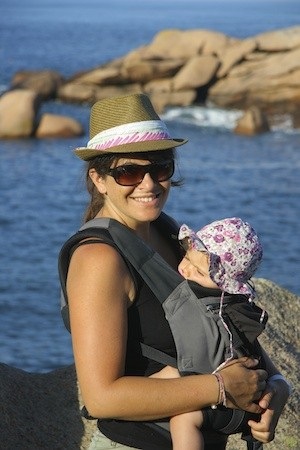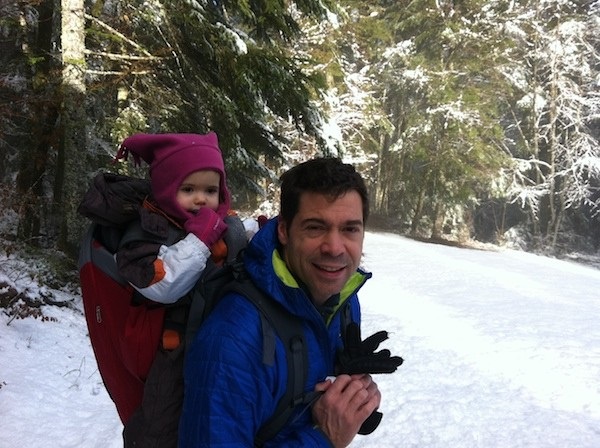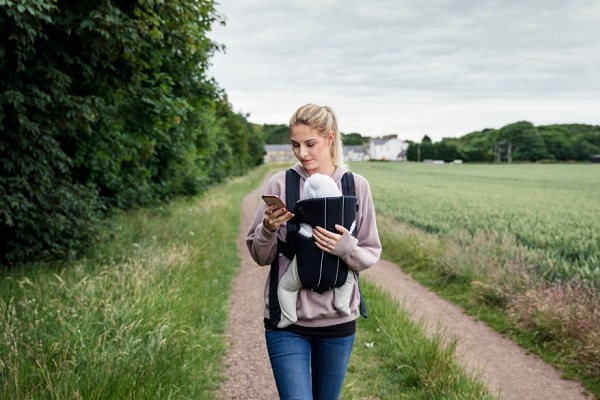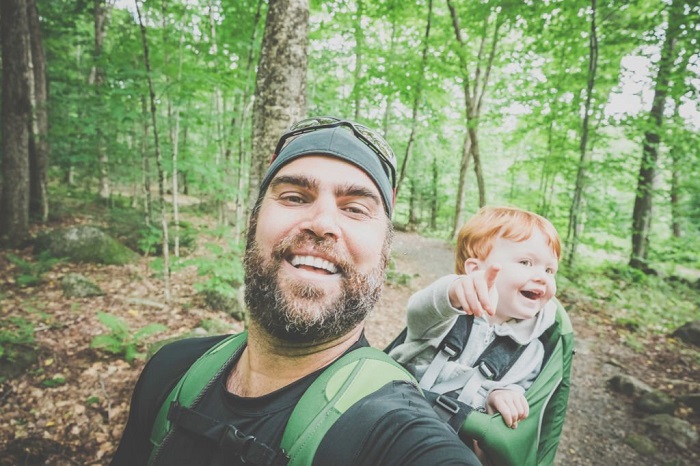How to Dress Your Baby for Hiking
Outdoor adventures with your baby can be a rewarding experience, fostering a connection with nature from an early age. With the perfect baby carrier or sling in hand and a chosen hiking route in mind, one question lingers: how should you dress your baby for the hike while being carried?
Well, babies have unique needs when it comes to clothing, as they are more sensitive to temperature changes and require protection from the elements. For this reason, several criteria come into play here: the season, the type of carry, and the comfort sought, and more.
In this guide, we’ll provide you with valuable tips and insights on how to dress your baby for hiking, allowing you to create memorable and enjoyable outdoor experiences for your little one. These tips are validated and approved by carrier parents!
How to Dress Your Baby for Hiking in Every Aspect!
Let’s see how to dress your baby for hiking from different perspectives…
Dress a Baby Worn in Summer

Easy! You will say to me. Certainly, in summer, it is easy to respect this golden rule: do not dress your baby too much. This advice also applies to the wearer, favoring breathable materials that will allow the most direct contact possible between the wearer and the baby being carried.
Therefore, mutual regulation can take place both in summer and in winter. Any additional layers of clothing such as a waterproof jacket will be placed over the sling or baby carrier. It is also advisable to dress lightly (a technical t-shirt for the wearer, a light bodysuit for the wearer) and to favor scarf knots that hold the baby with a single layer of fabric.
You can protect the feet and small calves that protrude with high socks or thin leggings. The fabric always protects better than sunscreen. And above all, we never forget the following elements: regular hydration (water or breast milk), sunscreen, head protection (hat, wide-brimmed bob), and eyes (sunglasses with cords, so you don’t have to go the extra 2 kilometers looking for where they may have landed!)
Dress a Baby Worn in Winter

When well-equipped, wearing your baby in winter becomes a true pleasure: the baby snugly nestled against the carrier provides warmth not only to them but also to the wearer.
However, unlike us, it does not move: certain precautions must be observed. The extremities (head, feet and hands) must be covered with a cap that attaches under the chin or a fleece hood, tights or very high socks, as well as small mittens if the baby tends to take his hands off the scarf or baby carrier.
Sharing the same coat allows everyone to benefit from the thermal regulation of both bodies, ensuring warmth. This arrangement also enables the ease of uncovering the baby without disturbing their sleep, providing a luxurious convenience.
In terms of comfort, we avoid clothes that go up at the slightest movement: the less there are folds, the more comfortable we are! A fleece jumpsuit or over-pajamas make it possible to get rid of pants that are tight at the waist or that go up unpleasantly below the knee. Also think about leggings, which are easy to remove and put back on.
Dress a Baby in a Sling

In the sling or a physiological baby carrier, the child is close to the wearer: you almost have to count the carrying system in the diapers that the baby wears (we are not talking about the diaper, of course!) Each system has its specificities: a knitted or stretch scarf will be warmer than a twill woven scarf, itself a little warmer than a jacquard scarf.
Finally, physiological baby carriers will be thicker because of their padding but more airy and less enveloping than a wrap. In terms of coats, baby carrier jackets cover the wearer and the worn, or baby carrier capes cover only the child and sometimes adapt to baby carriers.
Dressing a Baby in a Backpack Hiking Baby Carrier

In a backpack hiking baby carrier, the child is kept away from the wearer: it should be dressed like an adult with the three-layer system: a breathable contact layer, an intermediate layer to keep warm, and a layer external to protect against wind and rain.
Finally, a little trick that will save you more than once: when you carry it on your back and you are alone to install the child, remember to put on his hat before putting him in the baby carrier or the baby carrier. sling… or consider renting stretch arms!
More Advice
If you have not yet chosen the ideal baby carrier, you can follow our advice in our article Osprey Poco Child Carrier Review. If you want to know the best baby carriers for hiking that are optimum for a good portage respecting the child and the wearer. It’s over here: the best hiking baby carriers.
Frequently Asked Questions
What type of footwear is suitable for a baby on a hiking trail?
For babies who are not yet walking, soft-soled, comfortable baby shoes or booties are sufficient. Once they start walking, consider lightweight, supportive shoes that provide good traction. Make sure the shoes are the right size to allow for proper foot development and movement.
How can I protect my baby from insects during a hike?
Use baby-safe insect repellent on exposed skin and clothing. Dress your baby in long-sleeved shirts and pants to minimize skin exposure. Consider using a mosquito net or a baby carrier with a built-in insect shield for added protection.
What precautions should I take in rainy or wet conditions?
Invest in a waterproof jacket and pants for your baby. Use a rain cover or canopy on the stroller if you’re bringing one. Keep your baby’s feet dry with waterproof boots or shoes. Pack an extra set of dry clothes in case they get wet.
How do I handle changing weather conditions during a hike?
Be prepared by checking the weather forecast before your hike. Dress your baby in layers that can be easily added or removed. Bring a lightweight blanket or a rain cover for sudden weather changes, and always prioritize your baby’s comfort.
How can I ensure my baby stays comfortable during a longer hike?
Take breaks for feeding, diaper changes, and to allow your baby to stretch. Keep an eye on their cues for hunger or fatigue. Bring snacks, extra diapers, and any comfort items they may need. A comfortable baby carrier can also enhance their overall comfort during longer hikes.




